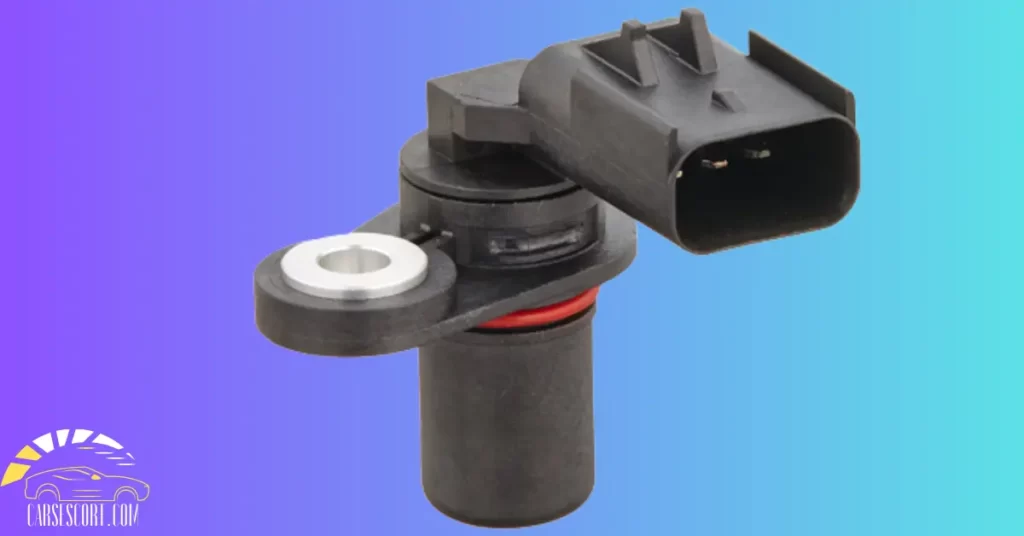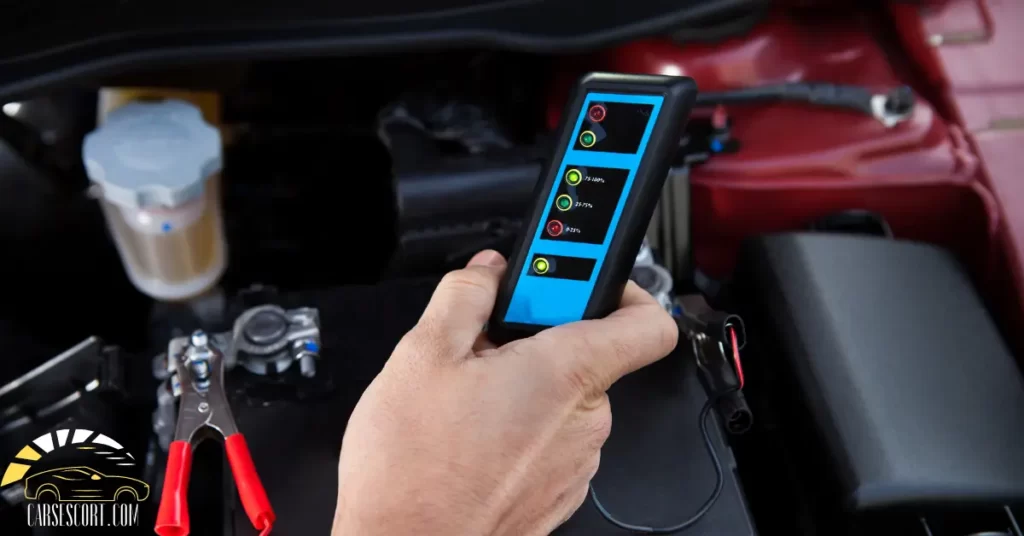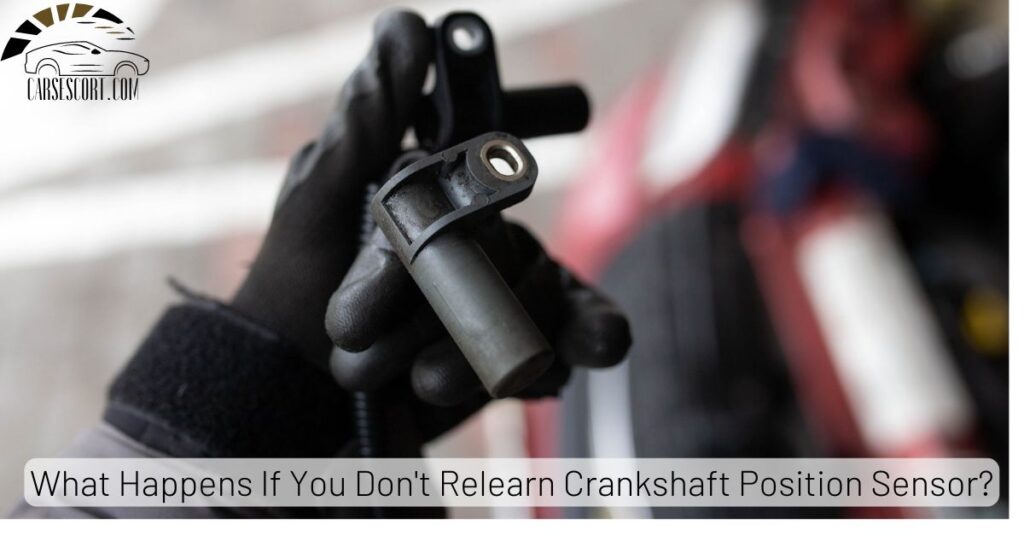The crankshaft position sensor (CPS) is essential to a car’s engine management system. It monitors the rotational speed and position of the engine’s crankshaft, allowing the computer to accurately control the timing of the engine’s fuel injection and ignition. Over time, CPSs can fail due to wear and tear or other issues; when this happens, it’s crucial to replace or relearn the sensor. So, what happens if you don’t relearn crankshaft position sensor?
When the crankshaft position sensor is not relearned after being replaced or disconnected, it can popup error code p1336 and cause several issues with the ECU, such as the engine not starting, stalling, misfiring, or running poorly.
Relearning the crankshaft position sensor typically involves following a specific process outlined by the manufacturer or a professional mechanic.
The process may involve using specialized diagnostic tools to reset the sensor and ensure it is calibrated correctly.
What Is The Crankshaft Position Sensor?
The crankshaft position sensor is a component in an internal combustion engine that monitors the rotational speed and position of the crankshaft. The sensor sends information to the engine control unit (ECU), which uses the data to control the ignition timing and fuel injection.
The crank sensor is usually located near the main crankshaft pulley, and it works by using a magnetic field to detect the rotation of the crankshaft.
As the crankshaft turns, it causes a toothed wheel or a tone ring to rotate past the sensor, which generates an electrical signal that the ECU uses to calculate the crankshaft’s speed and position.

What Is Crankshaft Relearning?
Crankshaft relearning, also known as crankshaft position sensor relearning or crankshaft position variation relearning, is used to reset and reprogram the engine control module (ECM) in a modern engine.
This process is typically performed after a sensor has been replaced, disconnected, or moved, as it ensures that the ECM is aware of the sensor’s new position and can accurately detect the crankshaft’s position.
What Happens If You Don’t Relearn Crankshaft Position Sensor?
When the crankshaft position sensor is not relearned after being replaced or disconnected, it can provide incorrect readings to the engine’s control module, leading to engine performance problems, such as the engine not starting and stalling, increased emissions, misfiring or running poorly because the sensor needs to be calibrated to accurately detect the crankshaft’s position.
Therefore, relearning the crankshaft position sensor after any maintenance work is important to ensure that the engine runs smoothly and reliably.
Importance Of Relearning Crankshaft Position Sensor
Relearning the crankshaft position sensor or camshaft position sensor is important because failure to do so can cause a range of issues with the engine’s performance.
The crankshaft sensor must be calibrated to provide accurate readings to the engine control module.
Bad crankshaft position sensor can result in inaccurate readings, which can cause the engine to run poorly or even damage other components.
Benefits Of Relearning The Crankshaft Position Sensor
Relearning the crankshaft position sensor involves resetting the ECM’s memory of the sensor’s position and calibrating it again.
1) Improved engine performance
If the sensor’s position is not calibrated correctly, it can cause fuel injection and ignition timing issues, leading to poor engine performance. By relearning the sensor, the ECM can ensure that the engine is running at optimal levels.
2) Increased fuel efficiency
Relearning the crankshaft sensor can also lead to increased fuel efficiency by ensuring that the engine is running at optimal levels.
Because the engine will be burning fuel more efficiently and using less of it to achieve the same level of performance.
3) Reduced emissions
A properly calibrated crankshaft position sensor can also help reduce emissions, as the engine will run more efficiently and burn fuel more cleanly.
4) Extended lifespan of engine components
By preventing issues with fuel injection and ignition timing, relearning the crankshaft position sensor can also help extend the lifespan of engine components, such as spark plugs and fuel injectors, which can be expensive to replace.

You May Also Like To Read:
How Do I Know If My Crankshaft Position Sensor Is Going Bad?
The crankshaft position sensor is a critical component in modern engines, and when it starts to fail, it can cause a range of issues that affect the engine’s performance.
Crankshaft relearn symptoms are:
1) Difficulty starting the engine
If the crankshaft sensor fails, the engine may have trouble starting. The engine control module (ECM) relies on the sensor to provide information about the position and speed of the crankshaft, which is used to control the fuel injection and ignition timing.
2) Engine stalling or misfiring
A faulty sensor can cause the engine to stall or misfire, as the ECM may not be able to accurately control the fuel injection and ignition timing and sends the wrong signals.
3) Reduced fuel efficiency
If the sensor provides incorrect information to the ECM, it may cause the engine to use more fuel than necessary and disturb fuel injection timing, leading to reduced fuel efficiency.
4) Check Engine Light
The Check Engine Light (CEL) may come on if the ECM detects a problem with the crankshaft position sensor.
5) Rough idling
A failing sensor can cause the engine to idle roughly or inconsistently as the ECM struggles to maintain the correct fuel injection and ignition timing.
If you are experiencing any of these symptoms, it is recommended that you take your vehicle to a qualified mechanic to have it diagnosed and repaired as soon as possible.
Delaying repairs can lead to more significant engine problems and potentially expensive repairs down the line.

When Should You Relearn Your Crankshaft Position Sensor?
Relearning the crankshaft position sensor is typically necessary when replaced or the engine control module (ECM) has been reprogrammed because the ECM needs to be informed of the new sensor’s position and range of operation.
Error code P1336 also indicates an issue with the crankshaft sensors. When the P1336 code appears, it’s time for the relearn procedure.
How to Relearn Crankshaft Position Sensor?
- Locate the OBD-II diagnostic port in your car and connect the OBD-II scanner to it.
- Turn on the ignition, making sure not to start the engine.
- Use the OBD-II scanner to select the “Relearn Crankshaft Sensor” function.
- Follow the instructions provided by the OBD-II scanner carefully and precisely.
- After completing the instructions, start the engine and allow it to idle for a few minutes.
- Finally, turn off the engine and remove the OBD-II scanner.
Replaced Crankshaft Position Sensor But Still Get Code P1336
Even though you replaced the crankshaft sensor in your vehicle, you’re still getting the same error code. There could be a few reasons for this:
1) Faulty replacement sensor
The replacement sensor you installed may also be faulty, so you’re still getting the same error code P1336. Try replacing the sensor again with a new one from a reputable source.
2) Wiring or connector issues
The problem may not be with the sensor itself but with the wiring or connector that connects it to the vehicle’s computer. Check the wiring and connector for damage, corrosion, or loose connections.
3) Other issues with the engine
The error code you’re seeing could be related to another problem with the engine, such as a malfunctioning fuel injector or ignition coil. Check for any other error codes or symptoms of engine trouble.
If you’ve checked all of these possibilities and still have issues, it may be best to read the owner’s manual or to take your vehicle to a mechanic or dealership for a more thorough diagnosis.
Crankshaft Position Sensor Relearn Without Scanner.
If you need to relearn the crankshaft sensor without a scanner, you can follow these steps:
How Do You Manually Relearn a Crankshaft Position Sensor?
- Ensure that all accessories are turned off.
- Start the engine and let it idle in either Park or Neutral for two minutes while the Air temperature sensor and Coolant temperature are within 5 degrees Celsius of each other.
- Accelerate the vehicle to 55 mph at part throttle and maintain this speed for 8-10 minutes until the engine reaches operating temperature.
- Continue cruising at 55 mph for an additional 5-6 minutes.
- Decelerate to 45 mph without braking and maintain this speed for 1 minute.
- Repeat step 4 four times, decelerating for 25 seconds each time without using the brakes. Return to 45 mph for 15 seconds between each deceleration cycle.
- Accelerate to 55 mph and cruise for 2 minutes.
- Stop the vehicle and idle for 2 minutes with the brake applied and the transmission in Drive (automatic transmission) or Neutral (manual transmission) with the clutch depressed.
These steps allow you to relearn the crankshaft position sensor without a scanner.

FAQ
How Much Does A Crank Relearn Cost?
The cost of a crank relearn can vary depending on where you go and who performs the service. Generally, you can expect to pay anywhere from $50 to $200 for a crank relearn procedure.
What Scan Tool Can Relearn Crankshaft Position Sensor?
Most modern scan tools are capable of relearning the crankshaft position sensor. However, it is important to check with the manufacturer or the tool’s user manual to ensure that your specific model can perform this function.
Why Relearn the Crankshaft Position Sensor?
Relearning the crankshaft position sensor is important because it ensures it is calibrated correctly and accurately detects its position. It can help improve engine performance and fuel efficiency and reduce emissions.
Do You Have to Reset a Crankshaft Sensor?
Yes, in most cases, you must reset or relearn the crankshaft sensor after replacing it or performing other maintenance tasks that may have affected its calibration.
How Long Does It Take Relearn the Crankshaft Position Sensor?
The amount of time it takes to relearn the crankshaft position sensor can vary depending on the make and model of the vehicle, as well as the scan tool being used. In some cases, it may only take a few minutes, while in others, it may take up to an hour.
Will Disconnecting Battery Reset Crankshaft Position Sensor?
Disconnecting the battery will not reset the crankshaft sensor. However, it may reset other systems in the vehicle, such as the check engine light or the radio presets.
What Happens If Crankshaft Position Sensor Is Not Connected?
The engine may not start or run poorly if the crankshaft position sensor is not connected because the sensor is responsible for detecting the crankshaft’s position and communicating that information to the engine control module.
Should I Replace the Crankshaft Position Sensor If It’s Bad?
It should be replaced if the crankshaft position sensor is faulty or not functioning properly. Ignoring the problem can lead to decreased engine performance, reduced fuel efficiency, and potential damage to other engine components.
Affiliate Disclosure: Cars Escort is a participant in the Amazon Services LLC Associates Program. As an Amazon Associate, we earn from qualifying purchases made through affiliate links on our site. Read Our Disclaimer .

